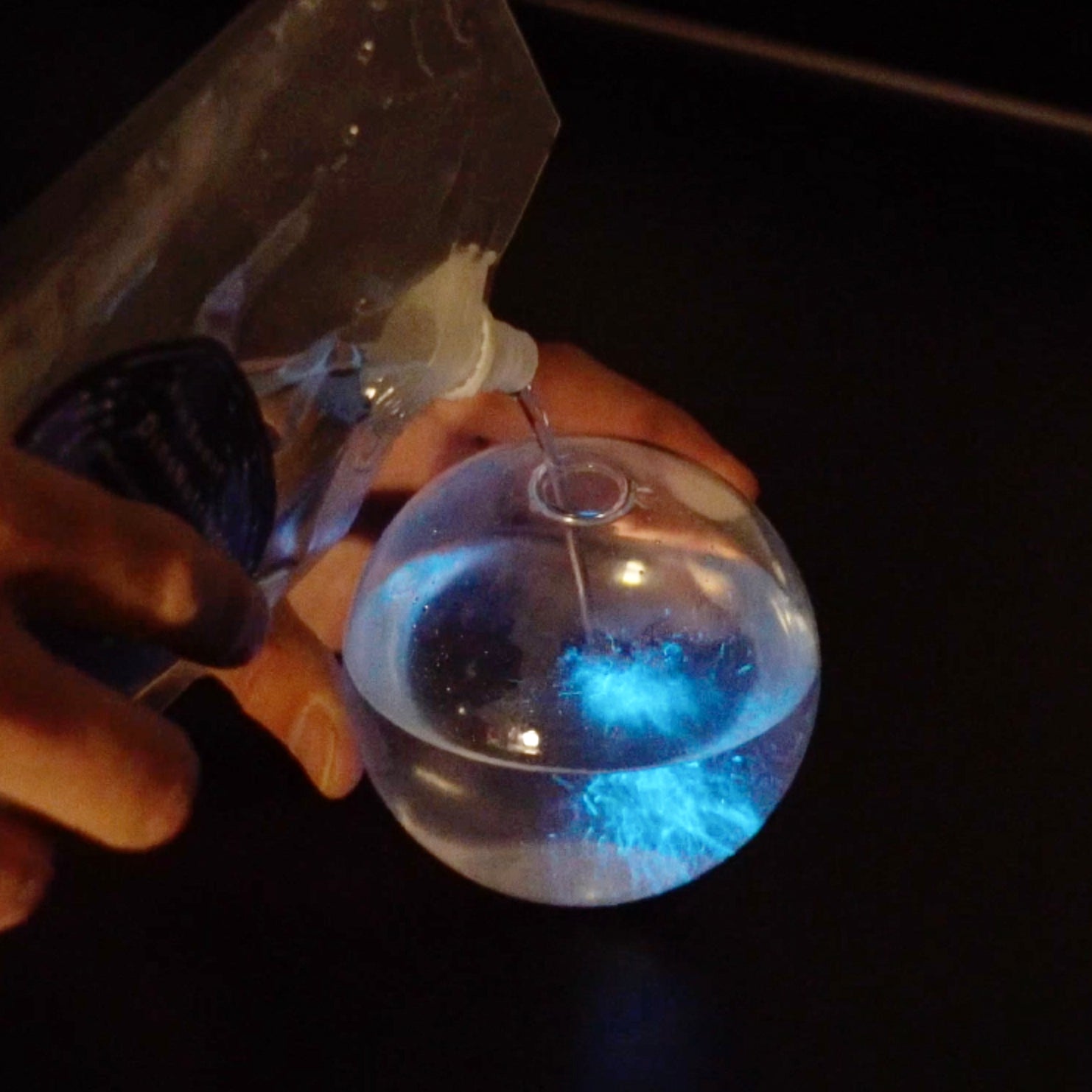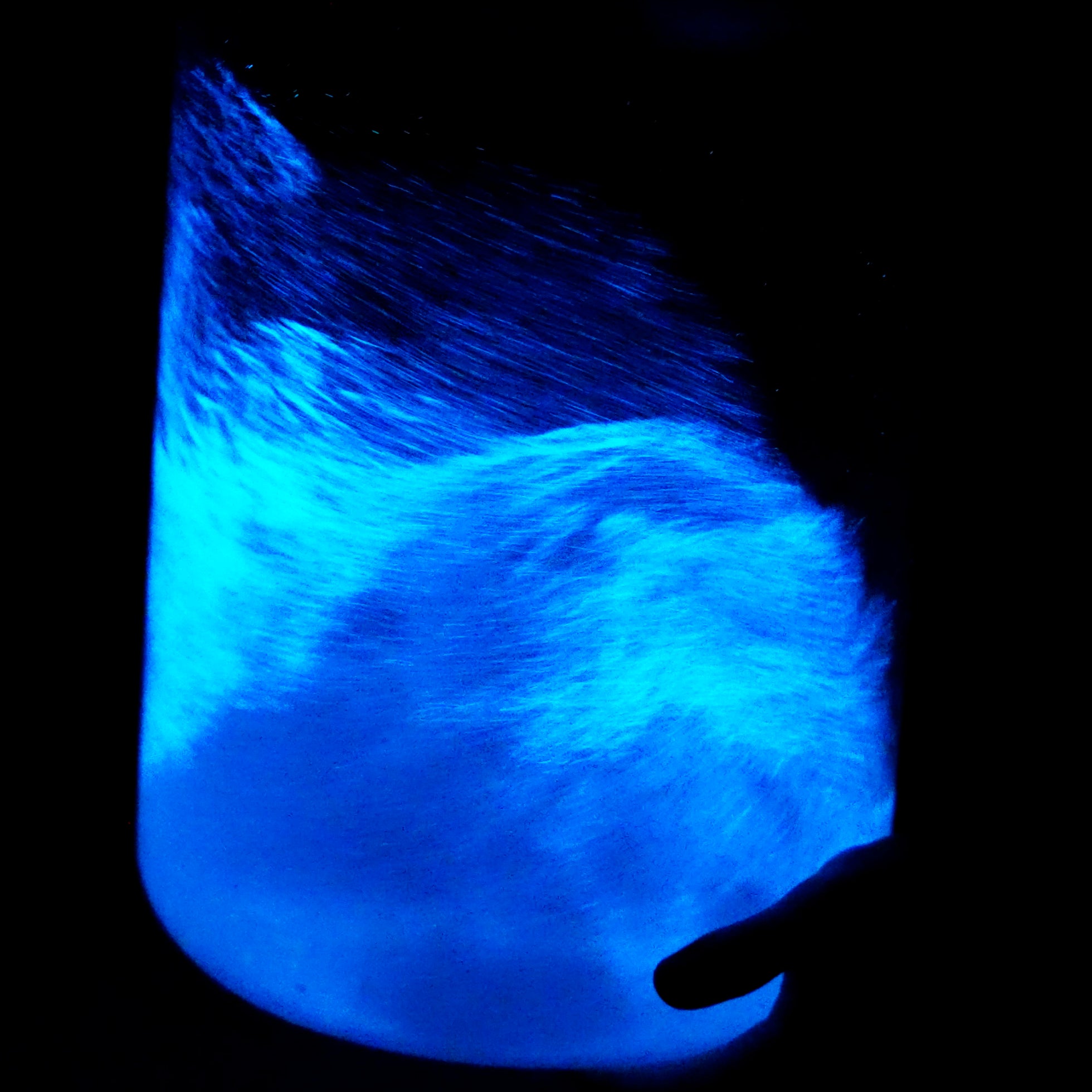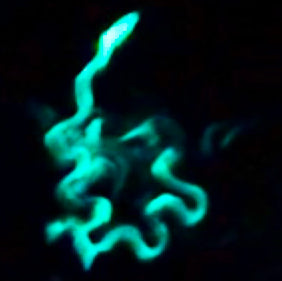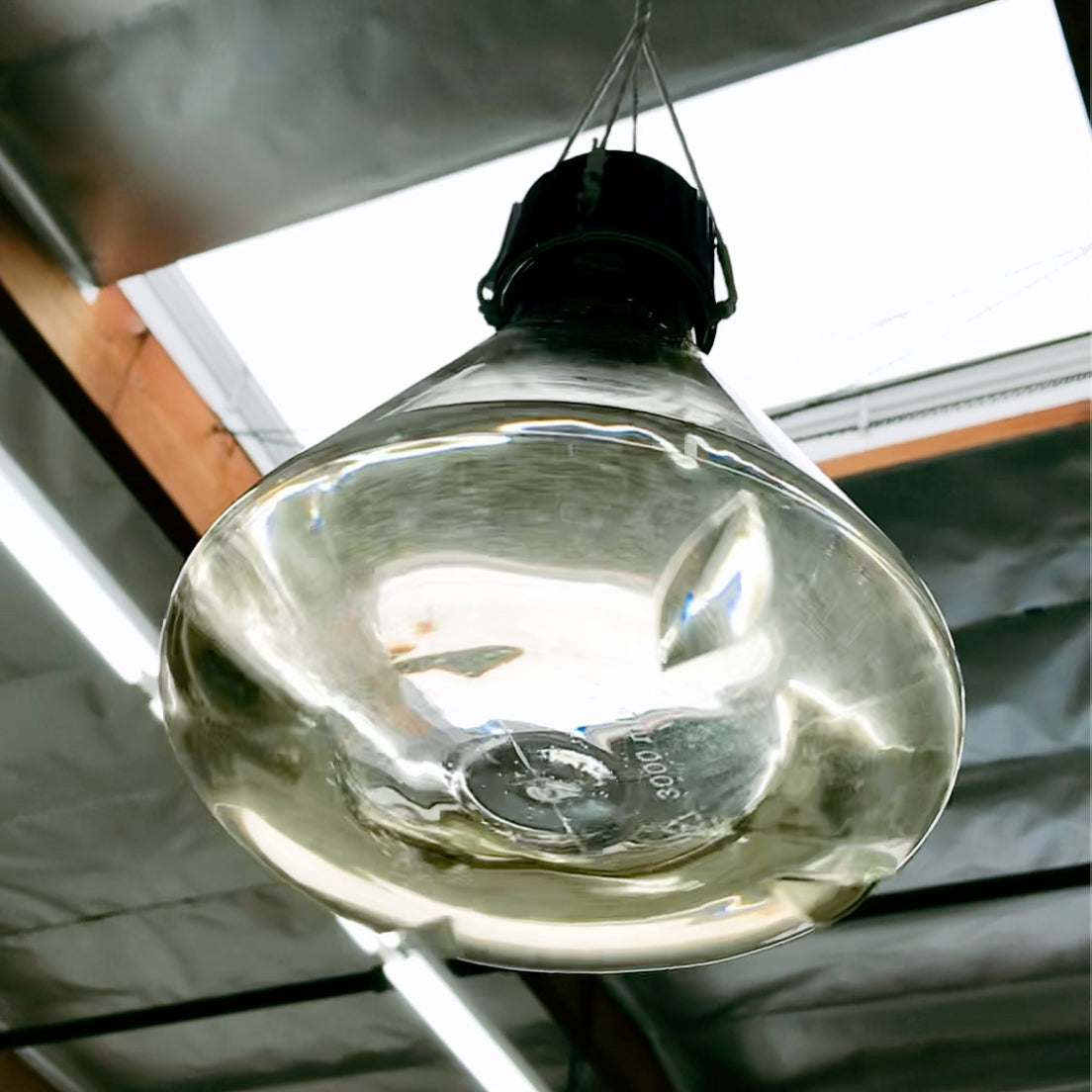Adding DinoNutrients - At Night

In this tutorial we show how easy it is to take care of your Bio-Orb. The process of adding DinoNutrients (or as we say 'feeding' your Bio-Orb) is simple and should be carried out at least twice a month for optimal health.
A Bio-Orb can survive for several weeks, even months, without feeding. However, it is best practice to add small amounts of DinoNutrients weekly or bi-monthly.
PyroDinos (the aglae in the Bio-Orb) do not 'eat' or 'feed on' DinoNurients. PyroDinos get all of their energy from sunlight or room lighting via photosynthesis (like a plant).
We add DinoNutrients for three main reasons.
1) To provide room to grow
2) To supplement required micronutrients in the seawater
3) To compensate for evaporation which occurs over time
And for Blue Boost DinoNutrients: To add supplemental factors that inhibit contamination.
Feeding your Bio-Orb is like feeding a houseplant, beneficial for growth and flowering (or bioluminescence) but not altogether required for survival.
Interesting facts about this video -This video was filmed at night, around 9pm. -The PyroDinos in the initial feeding are producing bioluminescence but the lighting in the room prevents the blue light of bioluminescence from being seen. The white room lighting overpowers the low-intensity bioluminescence. - The dense culture appears more clear at night (in the light) due to the absence of chlorophyll. Chlorophyll is generated during the day-cycle and gives the PyroDinos a brownish color. At night the PyroDinos lose their chlorophyll and appear more translucent.
Buy DinoNutrients



Comments